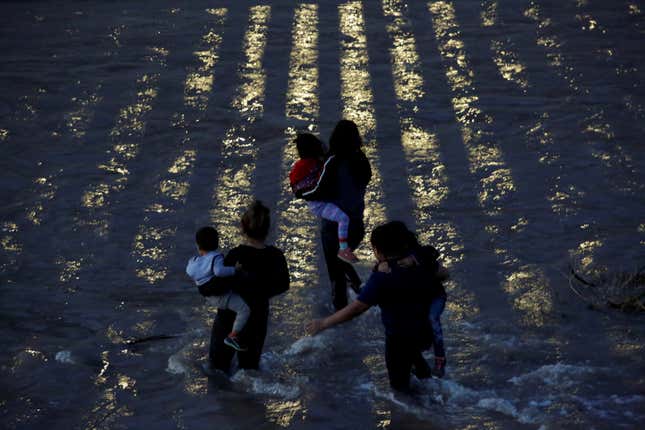Each year, officials at Catholic Charities of San Antonio, a social justice and community services organization focused on meeting the physical needs of people in this historic south-central Texas city, assist thousands of migrants entering the United States through the southwest border. With few exceptions, the migrants are overwhelmingly from Latin American countries.
But in recent weeks, they’ve noticed a rising trend: more Africans are joining Central Americans in attempting to enter the US through its southwest border.
In the last three weeks, Catholic Charities has received between 30 and 40 African migrants each day—significantly higher than what they previously saw, says J. Antonio Fernandez, president and CEO of Catholic Charities of San Antonio. These new arrivals hail from the Democratic Republic of Congo and Angola—two countries with no strong historic ties to the United States.
Most of them report fleeing extreme poverty and violence. DR Congo and Angola are two of Africa’s resource-wealthy countries. But for decades, DR Congo has been dogged by corruption, misrule by its leaders and violent ethnic conflicts. In fact, in recent days more than 300,000 have fled the northeastern region of the country due to clashes between two groups, the Hema and the Lendu.
Angola, one of the world’s largest oil producers, experienced a brief economic boom earlier this decade. There is little evidence that the growth spurt trickled down to the general population.
A great many of the migrants follow a similar route: they fly to Ecuador or Rio in Brazil before embarking by bus and by foot on the final leg of a trip that takes them through the jungles of Colombia, several Central American countries and into Mexico, a process that could take weeks, months or even years and is often fraught with danger. Some cross the Rio Grande River near Del Rio, Texas.
“Yesterday I heard a story about a woman who’d been raped,” says Fernandez.
Adds Catholic Charities spokeswoman Christina Higgs: “One of the things we heard was how the rivers pose a threat. Cross the wrong way and you could get swept away.”

Africans have entered the U.S through Mexico for several years. In the past, many came alone or accompanied by a single child. Fernandez says many of these newer arrivals are made up of families numbering four or five people.
In recent years illegal migration by Africans to western countries is often associated with life-risking attempts to enter Europe by crossing the Mediterranean via Libya and the Sahara desert.
Portland-bound
The City of San Antonio has teamed up with Catholic Charities of San Antonio, the San Antonio Food Bank and the Interfaith Welcome Coalition to operate the San Antonio Migrant Resource Center. The center offers a vast array of services to migrants, including legal assistance, health checkups clothing and shelter. Nearly all of the migrants are bound for other destinations in the United States and typically leave San Antonio after a couple of days.
Most are bound for Portland, Maine, which has sizeable Congolese and Angolan communities. Catholic Charities has been assisting the migrants with bus tickets to their final destinations. Between June 4 and June 19, the center saw approximately 375 African migrants, according to Roland Martinez, a spokesman for the City of San Antonio’s Department of Human Services. In Portland, officials processed 292 African migrants representing a total of 87 families between June 9 and June 19, says city spokeswoman Jessica Grondin.
San Antonio and Portland are striving to find more French and Lingala (DR Congo) and Portuguese (Angola) speaking interpreters. They’ve also worked to allay concerns that have been raised about the Ebola virus, which has affected regions of the Congo in recent months.
“We’ve been educating residents that they have been screened for any communicable diseases,” says San Antonio Councilwoman Ana Sandoval.
Both cities have poured considerable resources into assisting the migrants. San Antonio has marshaled the resources of several of its agencies, including its library, police, fire, library and parks and recreation departments to provide a variety of services, including children’s activities.
In addition to shelter, Portland is providing three meals a day, legal assistance with immigration and laundry services. A team of nurses from the Centers for Disease Control is providing health care services.
So far, the new migrants have received a warm reception. In Portland, the city has received more than 1,100 volunteer requests.
Maine, a state with an aging population, is glad to see these new residents because they and their children will form an important part of the next generation of workers, says Grondin.
“The state is quite old, and the population numbers are not going up,” she adds.
Sign up to the Quartz Africa Weekly Brief here for news and analysis on African business, tech and innovation in your inbox
